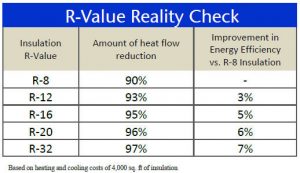We may forget it sometimes, but the main purpose of our garages in our houses in Sydney isn’t to store all the things we don’t use anymore…It’s actually to provide our vehicles with a shelter so they can run efficiently for a long time and look good. That’s why knowledge about our garage door maintenance is very important. Well, regardless what we keep in our garages in Sydney, we don’t want to expose it to too hot or cold temperatures so it won’t get damaged.
While there are many ways to measure whether or not you’re hitting these goals, an industry standard that is helpful for us is called R-Value. We assume most of you aren’t familiar with it. That’s why we would like to quickly explain its importance.
What does it mean R-Value?
Simply said, it’s the standard for measuring the thermal resistance of various construction materials. For example, it measures the amount of heat and cold that is able to pass through a wall. The higher a material’s R-Value is, the better insulation it provides.
Basic types of insulation
There are two most popular types of insulation on the market. Polystyrene and polyurethane. The first one is used for the variety of reasons. You can find it in your disposable coffee cups and as the protective material that is leveraged for packing. When used for garage doors, polystyrene goes between two steel walls. For two-layer garage doors, the material is bonded to the back of the wall.
The second one is known as the better material of the two as it provides much better thermal resistance. In addition, it adheres to the walls of garage doors easily, yet is also flexible and strong.
What R-Value do you need?
There are a couple of things you should consider before choosing R-Value for your garage. Firstly, is your garage attached or detached? If it’s detached and insulated too, you will want an R-Value of at least 12. You will also need to take a close look at how it’s otherwise able to deal with hotter or colder temperatures.

